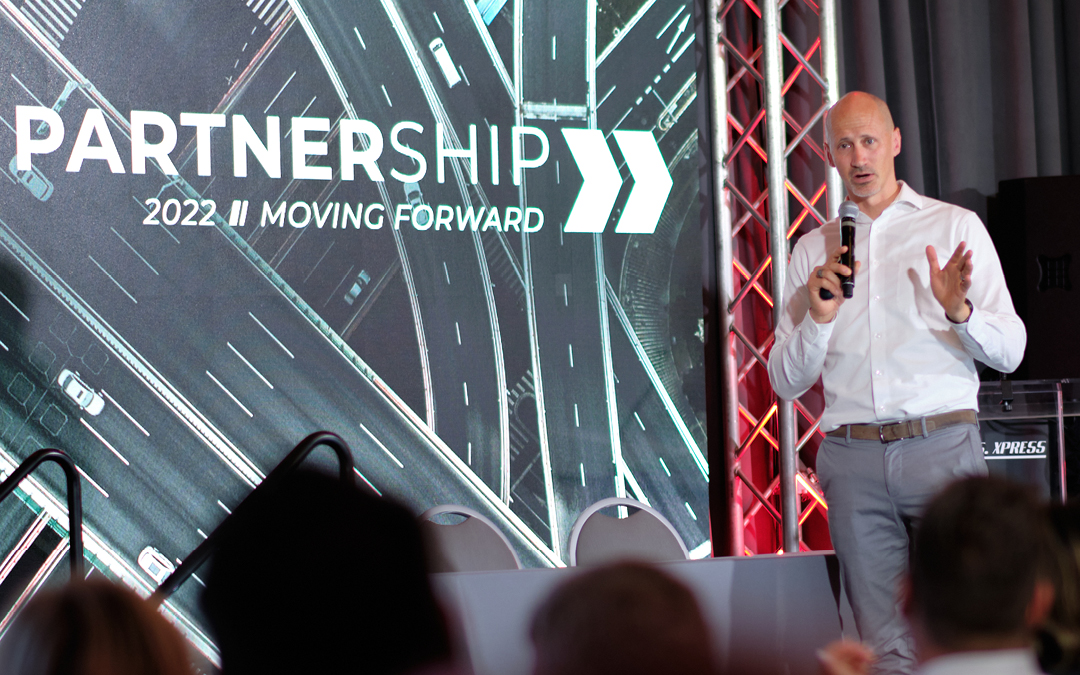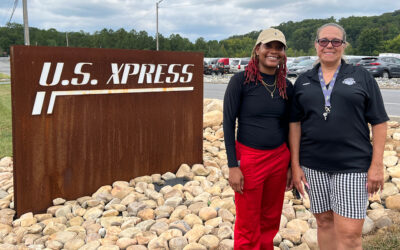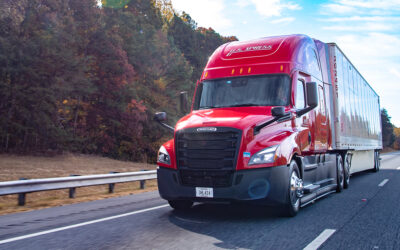Aurora co-founder and chief product officer addresses the upsides of AV, from helping address a shortage of professional drivers to delivering fuel savings.
What’s happening: Advances in self-driving technology come with some green upsides for shippers and carriers trying to reduce their environmental footprints.
Why it matters: “Shippers can realize much higher efficiency of their fleets and more rapid movement of their goods,” said Sterling Anderson, co-founder and Chief Product Officer of AV technology firm Aurora.
The bottom line: Hear more from AV expert Sterling Anderson in this video from our PartnerShip event.
Autonomous trucks have the potential to move more goods faster by driving for very long periods at steady speeds, but time isn’t the only things shippers and carriers will be able to save once self-driving trucks hit the roads in greater numbers.
“Shippers can realize much higher efficiency of their fleets and more rapid movement of their goods,” said Sterling Anderson, co-founder and Chief Product Officer of AV technology firm Aurora. “Lower greenhouse gas emissions, better fuel economy are opportunities with self-driving trucks principally because these trucks can be operated 24 hours a day… and they can drive nearly around the clock.”
Anderson talked about the future of autonomous vehicles during PartnerShip, the premier U.S. Xpress partner summit and showcase for some of our top industry experts. While the wide use of self-driving trucks is still years away, partnerships between AV technology companies and conventional fleets are advancing the use of self-driving trucks.
“In the next 5, 10, 15 years, I expect autonomous trucks to feather into existing networks in a fairly significant way,” Anderson said.
In early 2022, U.S. Xpress launched its partnership with Aurora to study the best ways to find commercial applications for autonomous vehicle technology. As part of the collaboration, Aurora gathers data from our over-the-road fleet to study where and on what types of routes its self-driving system could be deployed most effectively.
The potential of AV is significant, but this futuristic approach to hauling loads still depends on the people who power our business and keep goods moving. As the technology matures, U.S. Xpress will add self-driving trucks to our diversified mix of supply chain offerings. Those trucks will create more capacity, which will give our customers more options, and also give drivers more flexibility and predictability in their work lives.
With a truck driver shortage of about 80,000 and industry turnover generally above 90%, this technology could help keep goods moving more efficiently over the very long haul in particular.
“That’s challenging, to keep a supply chain running, optimized and performing efficiently when you don’t have [enough] drivers,” Anderson said. “Self-driving systems fill that gap. They fill it with a truck that isn’t limited by hours-of-service restrictions.”
The idea of self-driving trucks might make people uneasy, but the technology is built on multiple layers of safety-first features, Anderson added.
“We started the company with a focus of delivering the benefits of self-driving technology safely, quickly, and broadly,” he said. “Those adjectives and their sequence really matter to us.”





